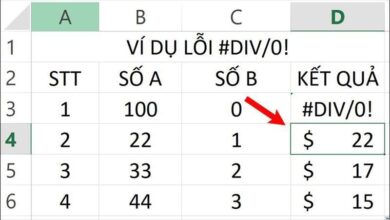Salk Institute for Biological Studies
Liu, S., Kim, D.I., Oh, T.G., Pao, G.M., Kim, J.H., Palmiter, R.D., Banghart, M.R., Lee, K.F., Evans, R.M., Han, S. Neural basis of opioid-induced respiratory depression and its rescue. (2021) Proceedings of the National Academy of Sciences of the United States of America. 118(23). DOI: 10.1073/pnas.2022134118
+ expand abstract
Opioid-induced respiratory depression (OIRD) causes death following an opioid overdose, yet the neurobiological mechanisms of this process are not well understood. Here, we show that neurons within the lateral parabrachial nucleus that express the µ-opioid receptor (PBL neurons) are involved in OIRD pathogenesis. PBL neuronal activity is tightly correlated with respiratory rate, and this correlation is abolished following morphine injection. Chemogenetic inactivation of PBL neurons mimics OIRD in mice, whereas their chemogenetic activation following morphine injection rescues respiratory rhythms to baseline levels. We identified several excitatory G protein-coupled receptors expressed by PBL neurons and show that agonists for these receptors restore breathing rates in mice experiencing OIRD. Thus, PBL neurons are critical for OIRD pathogenesis, providing a promising therapeutic target for treating OIRD in patients.
Campos, C.A., Bowen, A.J., Han, S., Wisse, B.E., Palmiter, R.D., Schwartz, M.W. Cancer-induced anorexia and malaise are mediated by CGRP neurons in the parabrachial nucleus. (2017) Nature Neuroscience. 20(7):934-942. DOI: 10.1038/nn.4574
+ expand abstract
Anorexia is a common manifestation of chronic diseases, including cancer. Here we investigate the contribution to cancer anorexia made by calcitonin gene-related peptide (CGRP) neurons in the parabrachial nucleus (PBN) that transmit anorexic signals. We show that CGRP neurons are activated in mice implanted with Lewis lung carcinoma cells. Inactivation of CGRP neurons before tumor implantation prevents anorexia and loss of lean mass, and their inhibition after symptom onset reverses anorexia. CGRP neurons are also activated in Apc mice, which develop intestinal cancer and lose weight despite the absence of reduced food intake. Inactivation of CGRP neurons in Apc mice permits hyperphagia that counteracts weight loss, revealing a role for these neurons in a ‘nonanorexic’ cancer model. We also demonstrate that inactivation of CGRP neurons prevents lethargy, anxiety and malaise associated with cancer. These findings establish CGRP neurons as key mediators of cancer-induced appetite suppression and associated behavioral changes.
Rubinstein, M.*, Han, S.*, Tai, C., Westenbroek, R.E., Hunker, A., Scheuer, T., Catterall, W.A. Dissecting the phenotypes of Dravet syndrome by gene deletion. (2015) Brain : A Journal of Neurology. 138(Pt 8):2219-33. DOI: 10.1093/brain/awv142
+ expand abstract
Neurological and psychiatric syndromes often have multiple disease traits, yet it is unknown how such multi-faceted deficits arise from single mutations. Haploinsufficiency of the voltage-gated sodium channel Nav1.1 causes Dravet syndrome, an intractable childhood-onset epilepsy with hyperactivity, cognitive deficit, autistic-like behaviours, and premature death. Deletion of Nav1.1 channels selectively impairs excitability of GABAergic interneurons. We studied mice having selective deletion of Nav1.1 in parvalbumin- or somatostatin-expressing interneurons. In brain slices, these deletions cause increased threshold for action potential generation, impaired action potential firing in trains, and reduced amplification of postsynaptic potentials in those interneurons. Selective deletion of Nav1.1 in parvalbumin- or somatostatin-expressing interneurons increases susceptibility to thermally-induced seizures, which are strikingly prolonged when Nav1.1 is deleted in both interneuron types. Mice with global haploinsufficiency of Nav1.1 display autistic-like behaviours, hyperactivity and cognitive impairment. Haploinsufficiency of Nav1.1 in parvalbumin-expressing interneurons causes autistic-like behaviours, but not hyperactivity, whereas haploinsufficiency in somatostatin-expressing interneurons causes hyperactivity without autistic-like behaviours. Heterozygous deletion in both interneuron types is required to impair long-term spatial memory in context-dependent fear conditioning, without affecting short-term spatial learning or memory. Thus, the multi-faceted phenotypes of Dravet syndrome can be genetically dissected, revealing synergy in causing epilepsy, premature death and deficits in long-term spatial memory, but interneuron-specific effects on hyperactivity and autistic-like behaviours. These results show that multiple disease traits can arise from similar functional deficits in specific interneuron types.
Han, S., Soleiman, M.T., Soden, M.E., Zweifel, L.S., Palmiter, R.D. Elucidating an Affective Pain Circuit that Creates a Threat Memory. (2015) Cell. 162(2):363-374. DOI: 10.1016/j.cell.2015.05.057
+ expand abstract
Animals learn to avoid harmful situations by associating a neutral stimulus with a painful one, resulting in a stable threat memory. In mammals, this form of learning requires the amygdala. Although pain is the main driver of aversive learning, the mechanism that transmits pain signals to the amygdala is not well resolved. Here, we show that neurons expressing calcitonin gene-related peptide (CGRP) in the parabrachial nucleus are critical for relaying pain signals to the central nucleus of amygdala and that this pathway may transduce the affective motivational aspects of pain. Genetic silencing of CGRP neurons blocks pain responses and memory formation, whereas their optogenetic stimulation produces defensive responses and a threat memory. The pain-recipient neurons in the central amygdala expressing CGRP receptors are also critical for establishing a threat memory. The identification of the neural circuit conveying affective pain signals may be pertinent for treating pain conditions with psychiatric comorbidities.
Carter, M.E., Han, S., Palmiter, R.D. Parabrachial calcitonin gene-related peptide neurons mediate conditioned taste aversion. (2015) Journal of Neuroscience. 35(11):4582-6. DOI: 10.1523/JNEUROSCI.3729-14.2015
+ expand abstract
Conditioned taste aversion (CTA) is a phenomenon in which an individual forms an association between a novel tastant and toxin-induced gastrointestinal malaise. Previous studies showed that the parabrachial nucleus (PBN) contains neurons that are necessary for the acquisition of CTA, but the specific neuronal populations involved are unknown. Previously, we identified calcitonin gene-related peptide (CGRP)-expressing neurons in the external lateral subdivision of the PBN (PBel) as being sufficient to suppress appetite and necessary for the anorexigenic effects of appetite-suppressing substances including lithium chloride (LiCl), a compound often used to induce CTA. Here, we test the hypothesis that PBel CGRP neurons are sufficient and necessary for CTA acquisition in mice. We show that optogenetic activation of these neurons is sufficient to induce CTA in the absence of anorexigenic substances, whereas genetically induced silencing of these neurons attenuates acquisition of CTA upon exposure to LiCl. Together, these results demonstrate that PBel CGRP neurons mediate a gastrointestinal distress signal required to establish CTA.
Han, S., Tai, C., Jones, C.J., Scheuer, T., Catterall, W.A. Enhancement of inhibitory neurotransmission by GABAA receptors having α2,3-subunits ameliorates behavioral deficits in a mouse model of autism. (2014) Neuron. 81(6):1282-1289. DOI: 10.1016/j.neuron.2014.01.016
+ expand abstract
Autism spectrum disorder (ASD) may arise from increased ratio of excitatory to inhibitory neurotransmission in the brain. Many pharmacological treatments have been tested in ASD, but only limited success has been achieved. Here we report that BTBR T(+)Itpr3(tf)/J (BTBR) mice, a model of idiopathic autism, have reduced spontaneous GABAergic neurotransmission. Treatment with low nonsedating/nonanxiolytic doses of benzodiazepines, which increase inhibitory neurotransmission through positive allosteric modulation of postsynaptic GABAA receptors, improved deficits in social interaction, repetitive behavior, and spatial learning. Moreover, negative allosteric modulation of GABAA receptors impaired social behavior in C57BL/6J and 129SvJ wild-type mice, suggesting that reduced inhibitory neurotransmission may contribute to social and cognitive deficits. The dramatic behavioral improvement after low-dose benzodiazepine treatment was subunit specific-the α2,3-subunit-selective positive allosteric modulator L-838,417 was effective, but the α1-subunit-selective drug zolpidem exacerbated social deficits. Impaired GABAergic neurotransmission may contribute to ASD, and α2,3-subunit-selective positive GABAA receptor modulation may be an effective treatment.
Han, S., Tai, C., Westenbroek, R.E., Yu, F.H., Cheah, C.S., Potter, G.B., Rubenstein, J.L., Scheuer, T., de la Iglesia, H.O., Catterall, W.A. Autistic-like behaviour in Scn1a+/- mice and rescue by enhanced GABA-mediated neurotransmission. (2012) Nature. 489(7416):385-90. DOI: 10.1038/nature11356
+ expand abstract
Haploinsufficiency of the SCN1A gene encoding voltage-gated sodium channel Na(V)1.1 causes Dravet’s syndrome, a childhood neuropsychiatric disorder including recurrent intractable seizures, cognitive deficit and autism-spectrum behaviours. The neural mechanisms responsible for cognitive deficit and autism-spectrum behaviours in Dravet’s syndrome are poorly understood. Here we report that mice with Scn1a haploinsufficiency exhibit hyperactivity, stereotyped behaviours, social interaction deficits and impaired context-dependent spatial memory. Olfactory sensitivity is retained, but novel food odours and social odours are aversive to Scn1a(+/-) mice. GABAergic neurotransmission is specifically impaired by this mutation, and selective deletion of Na(V)1.1 channels in forebrain interneurons is sufficient to cause these behavioural and cognitive impairments. Remarkably, treatment with low-dose clonazepam, a positive allosteric modulator of GABA(A) receptors, completely rescued the abnormal social behaviours and deficits in fear memory in the mouse model of Dravet’s syndrome, demonstrating that they are caused by impaired GABAergic neurotransmission and not by neuronal damage from recurrent seizures. These results demonstrate a critical role for Na(V)1.1 channels in neuropsychiatric functions and provide a potential therapeutic strategy for cognitive deficit and autism-spectrum behaviours in Dravet’s syndrome.
Han, S., Yu, F.H., Schwartz, M.D., Linton, J.D., Bosma, M.M., Hurley, J.B., Catterall, W.A., de la Iglesia, H.O. Na(V)1.1 channels are critical for intercellular communication in the suprachiasmatic nucleus and for normal circadian rhythms. (2012) Proceedings of the National Academy of Sciences of the United States of America. 109(6):E368-77. DOI: 10.1073/pnas.1115729109
+ expand abstract
Na(V)1.1 is the primary voltage-gated Na(+) channel in several classes of GABAergic interneurons, and its reduced activity leads to reduced excitability and decreased GABAergic tone. Here, we show that Na(V)1.1 channels are expressed in the suprachiasmatic nucleus (SCN) of the hypothalamus. Mice carrying a heterozygous loss of function mutation in the Scn1a gene (Scn1a(+/-)), which encodes the pore-forming α-subunit of the Na(V)1.1 channel, have longer circadian period than WT mice and lack light-induced phase shifts. In contrast, Scn1a(+/-) mice have exaggerated light-induced negative-masking behavior and normal electroretinogram, suggesting an intact retina light response. Scn1a(+/-) mice show normal light induction of c-Fos and mPer1 mRNA in ventral SCN but impaired gene expression responses in dorsal SCN. Electrical stimulation of the optic chiasm elicits reduced calcium transients and impaired ventro-dorsal communication in SCN neurons from Scn1a(+/-) mice, and this communication is barely detectable in the homozygous gene KO (Scn1a(-/-)). Enhancement of GABAergic transmission with tiagabine plus clonazepam partially rescues the effects of deletion of Na(V)1.1 on circadian period and phase shifting. Our report demonstrates that a specific voltage-gated Na(+) channel and its associated impairment of SCN interneuronal communication lead to major deficits in the function of the master circadian pacemaker. Heterozygous loss of Na(V)1.1 channels is the underlying cause for severe myoclonic epilepsy of infancy; the circadian deficits that we report may contribute to sleep disorders in severe myoclonic epilepsy of infancy patients.
Eckel-Mahan, K.L., Phan, T., Han, S., Wang, H., Chan, G.C., Scheiner, Z.S., Storm, D.R. Circadian oscillation of hippocampal MAPK activity and cAmp: implications for memory persistence. (2008) Nature Neuroscience. 11(9):1074-82.
+ expand abstract
The mitogen-activated protein kinase (MAPK) and cyclic adenosine monophosphate (cAMP) signal transduction pathways have critical roles in the consolidation of hippocampus-dependent memory. We found that extracellular regulated kinase 1/2 MAPK phosphorylation and cAMP underwent a circadian oscillation in the hippocampus that was paralleled by changes in Ras activity and the phosphorylation of MAPK kinase and cAMP response element-binding protein (CREB). The nadir of this activation cycle corresponded with severe deficits in hippocampus-dependent fear conditioning under both light-dark and free-running conditions. Circadian oscillations in cAMP and MAPK activity were absent in memory-deficient transgenic mice that lacked Ca2+ -stimulated adenylyl cyclases. Furthermore, physiological and pharmacological interference with oscillations in MAPK phosphorylation after the cellular memory consolidation period impaired the persistence of hippocampus-dependent memory. These data suggest that the persistence of long-term memories may depend on reactivation of the cAMP/MAPK/CREB transcriptional pathway in the hippocampus during the circadian cycle.
Han, S., Kim, T.D., Ha, D.C., Kim, K.T. Rhythmic expression of adenylyl cyclase VI contributes to the differential regulation of serotonin N-acetyltransferase by bradykinin in rat pineal glands. (2005) Journal of Biological Chemistry. 280(46):38228-34. DOI: 10.1074/jbc.M508130200
+ expand abstract
The rhythmic nocturnal production of melatonin in pineal glands is controlled by the periodic release of norepinephrine from the superior cervical ganglion. Norepinephrine binds to the beta-adrenergic receptor and stimulates an increase in intracellular cAMP levels, leading to the transcriptional activation of serotonin N-acetyltransferase, which in turn promotes melatonin production. In the present study, we report that bradykinin inhibits basal- and forskolin-stimulated adenylyl cyclase activity, norepinephrine-induced cAMP generation, and N-acetyltransferase expression in a calcium-dependent manner. These effects were blocked by pretreatment with U73122 (a selective phospholipase C inhibitor), and 1,2-bis(o-aminophenoxy)ethane-N,N,N’,N’-tetraacetic acid (a Ca(2+) chelator), but not pertussis toxin. The calcium ionophore, ionomycin, inhibited isoproterenol-mediated cAMP generation, similar to bradykinin. Interestingly, the inhibitory effect of bradykinin was evident only during the daytime. At midday, bradykinin inhibited the cAMP level by approximately 50% but markedly stimulated cAMP production (by approximately 50%) at night. Northern blotting and immunoblotting data disclosed circadian expression of calcium-inhibitable adenylyl cyclase type 6. Expression of adenylyl cyclase type 6 was maximal at Zeitgeber Time (ZT) 01 and very low at ZT 13. Our results suggest that bradykinin-induced calcium inhibits melatonin synthesis through the mediation of adenylyl cyclase type 6 expression.





